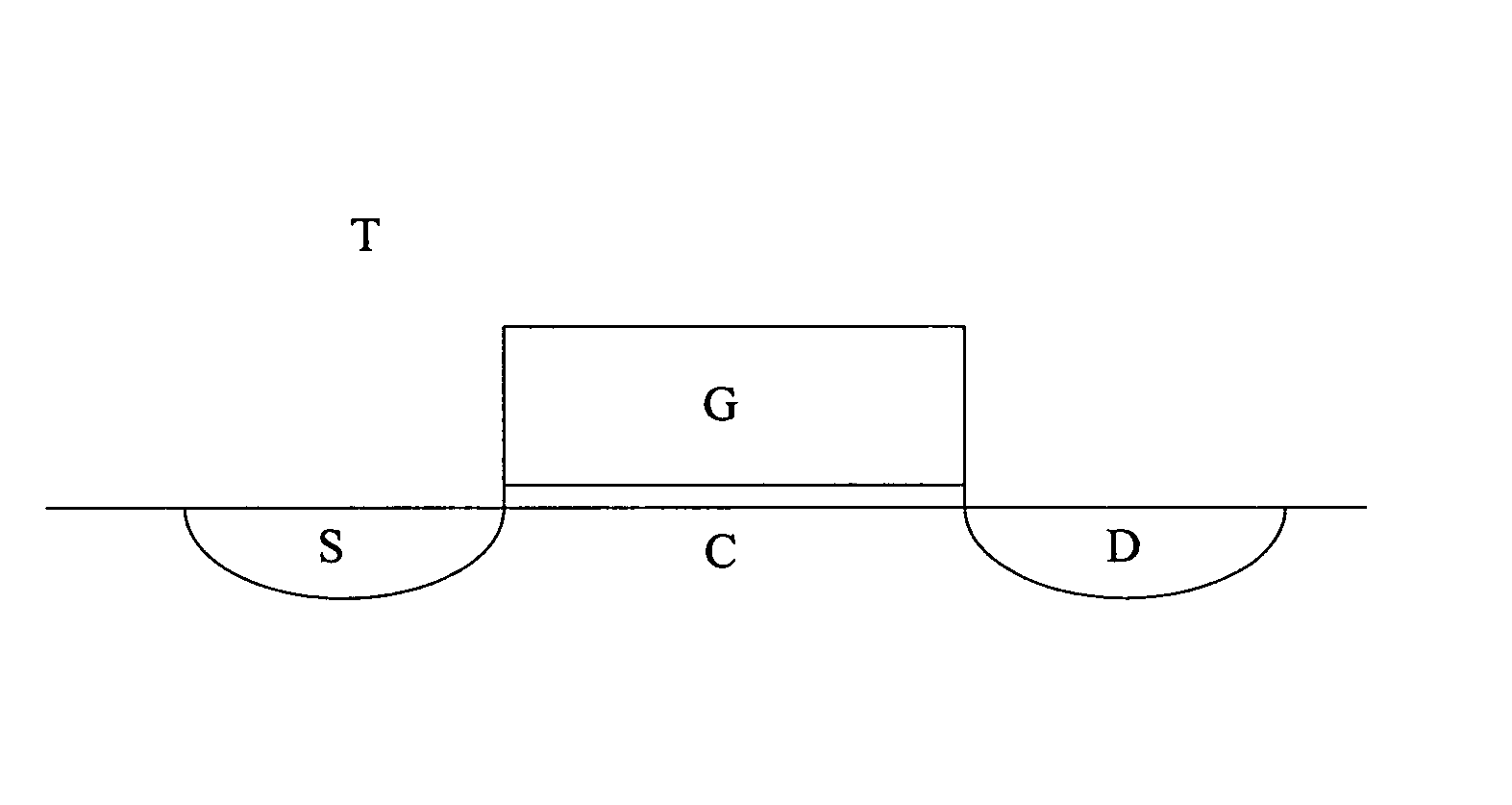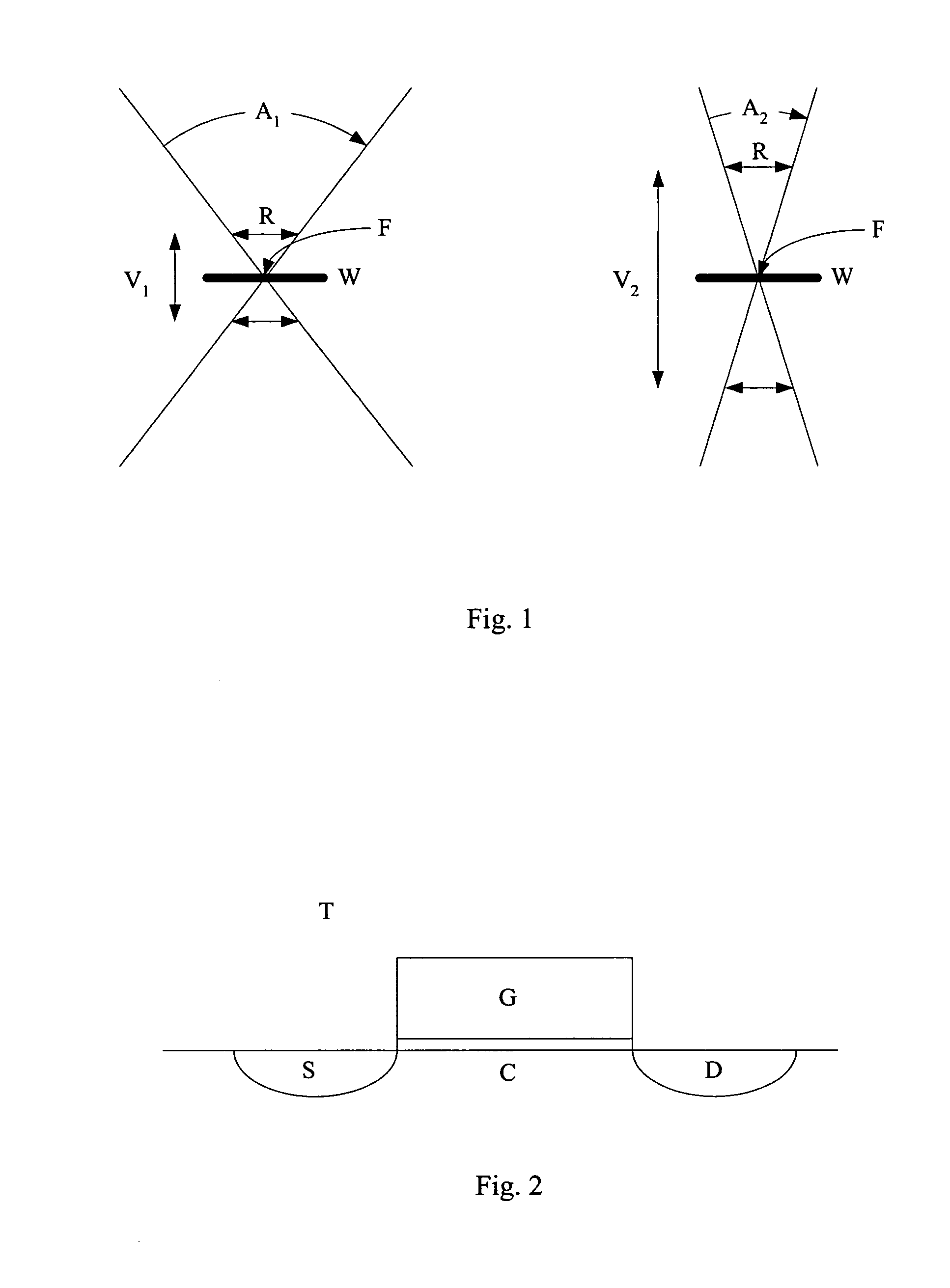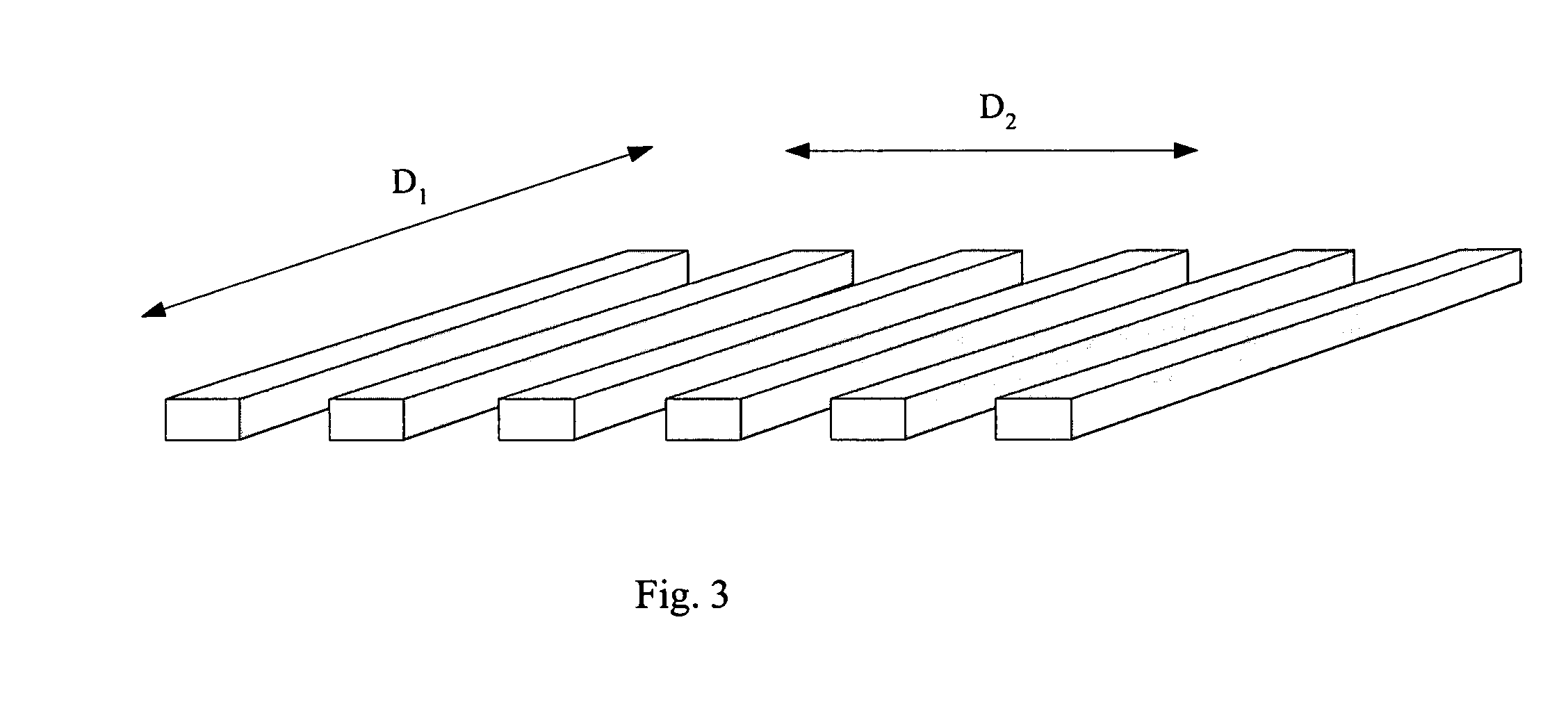Optimization of critical dimensions and pitch of patterned features in and above a substrate
a technology of patterned features and critical dimensions, applied in the direction of semiconductor devices, electrical equipment, semiconductor/solid-state device details, etc., can solve the problems of increasing lithography costs and increasing the overall device cos
- Summary
- Abstract
- Description
- Claims
- Application Information
AI Technical Summary
Benefits of technology
Problems solved by technology
Method used
Image
Examples
Embodiment Construction
[0024] Typically semiconductor devices are formed in a substrate, normally the surface of a semiconductor wafer, most often monocrystalline silicon. There has been steady pressure to decrease cost of semiconductor devices by decreasing pitch of patterned features in the substrate, allowing more devices to be packed into a given substrate area. It is common to form transistors, for example CMOS transistors, in the substrate while forming multiple wiring levels above the substrate.
[0025] Device dimensions can be described by the terms pitch and critical dimension. Pitch was defined earlier as the center-to-center distance between features of an integrated circuit. This distance is apparent when features are regular or repeating; for example, when there is a plurality of parallel lines with consistent size and spacing. Pitch can be used to describe features without this regularity as well, however. When features are not regular or repeating, pitch is considered herein to be the sum of...
PUM
 Login to View More
Login to View More Abstract
Description
Claims
Application Information
 Login to View More
Login to View More - R&D
- Intellectual Property
- Life Sciences
- Materials
- Tech Scout
- Unparalleled Data Quality
- Higher Quality Content
- 60% Fewer Hallucinations
Browse by: Latest US Patents, China's latest patents, Technical Efficacy Thesaurus, Application Domain, Technology Topic, Popular Technical Reports.
© 2025 PatSnap. All rights reserved.Legal|Privacy policy|Modern Slavery Act Transparency Statement|Sitemap|About US| Contact US: help@patsnap.com



